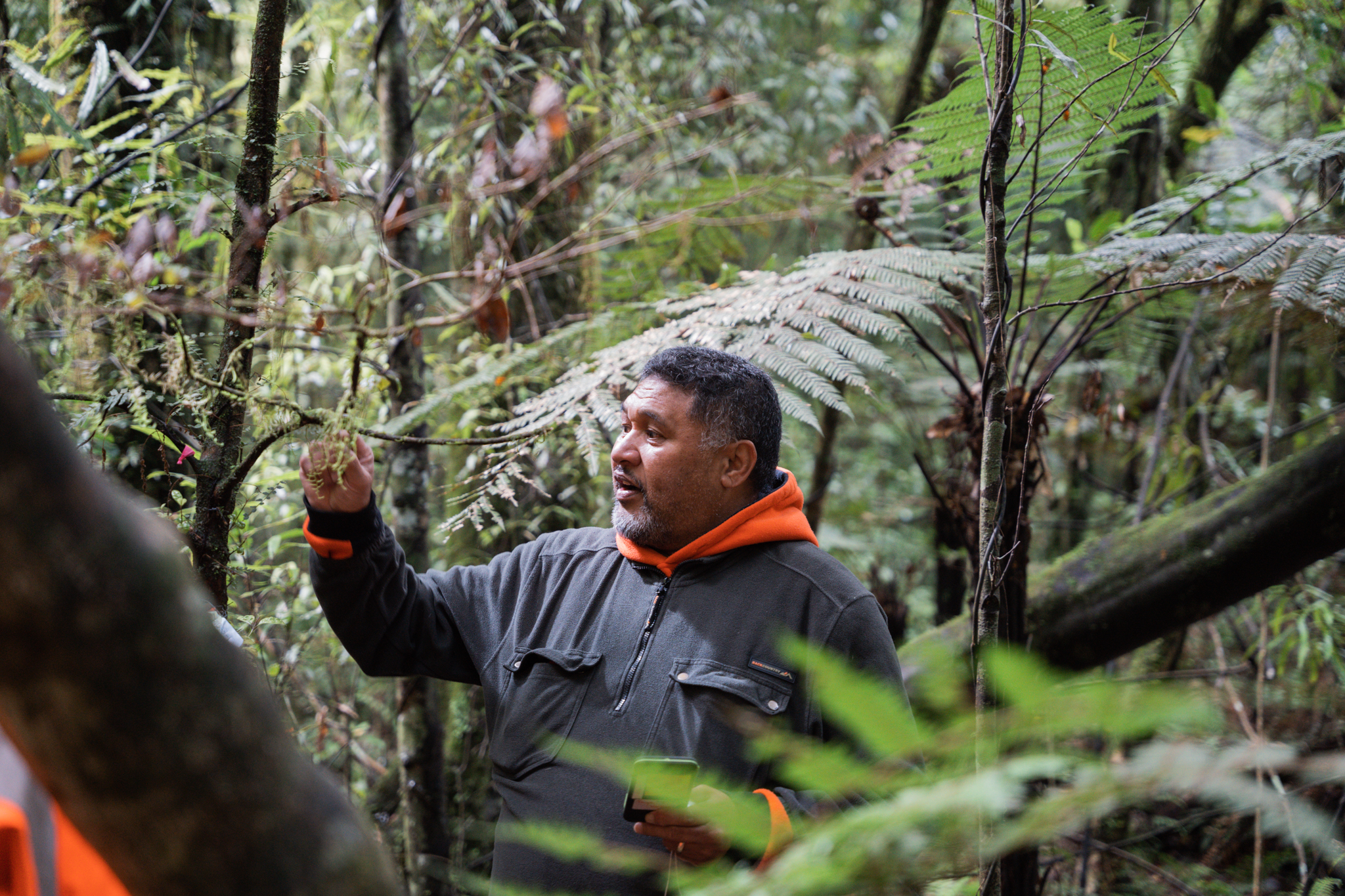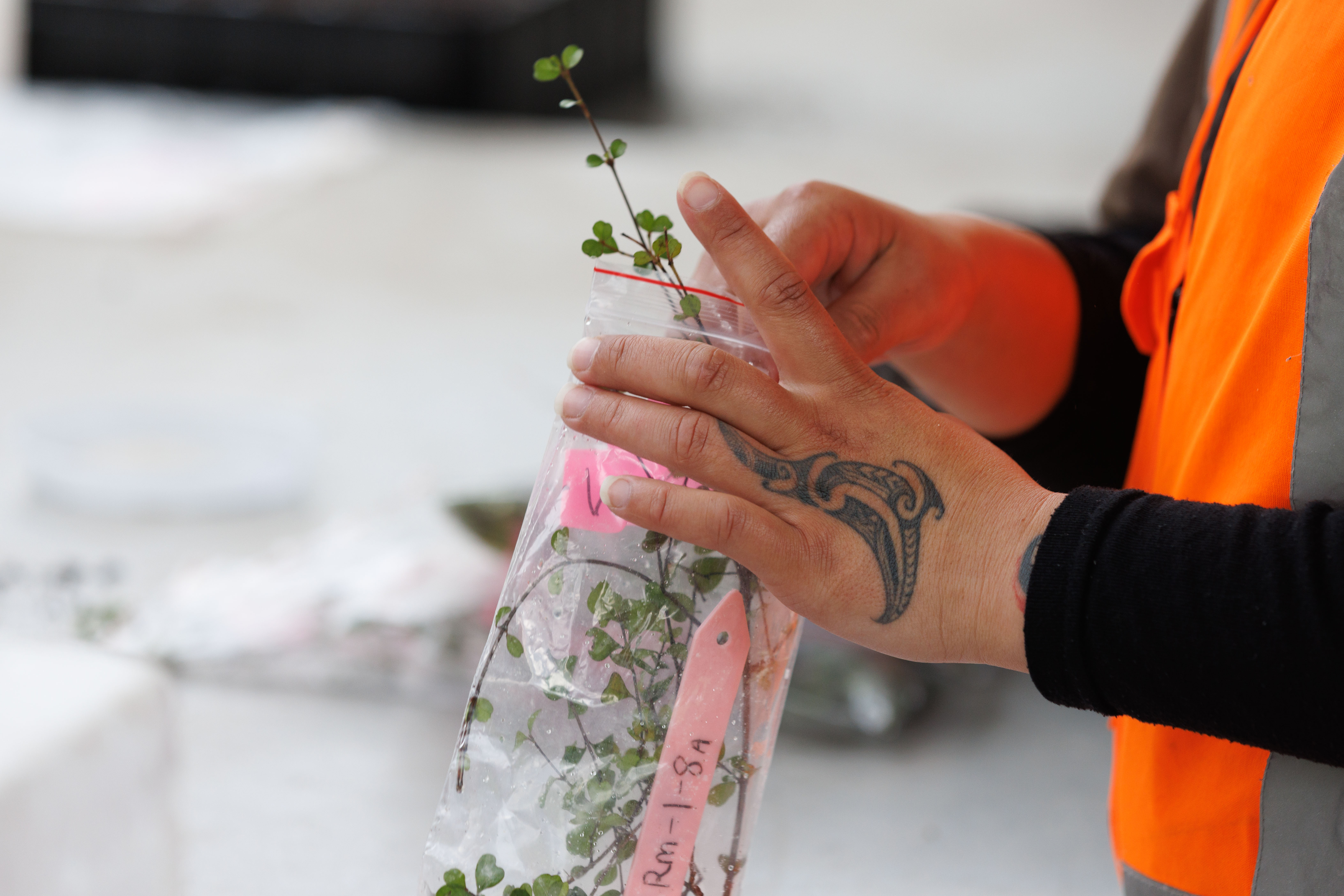A collaborative fight against myrtle rust in the Bay of Plenty

A project that employed and trained 16 workers in everything from cutting collection and propagation, to plant identification and navigation is coming to an end.
A strong partnership approach alongside efforts in breeding and conservation are poised to stand as the project’s enduring legacy.
Te Rātā Whakamaru Jobs for Resistance was a three-year research programme funded by the Department of Conservation – Te Papa Atawhai through the Jobs for Nature Mahi ō te Taiao programme – a $1.185 billion programme for projects benefiting the environment, people and regions.
Rotoiti 15 partnered with Scion to deliver the project which aimed to map and monitor taonga species vulnerable to myrtle rust and explore whether it was possible to breed for resistance.
Myrtle rust, caused by the fungus Austropuccinia psidii, poses a significant threat to New Zealand’s native flora. It is feared the already small population of vulnerable Lophomyrtus trees in the Lakes District could be lost without intervention.
The collaboration between Scion and Rotoiti 15 Trust has been at the heart of the project’s success.
Rotoiti 15 hired 10 kaimahi (workers) for Te Tira Rātā (the field team) with a total of 16 people trained during the project.
Scion's project lead Darryl Herron says a key goal of the project was to create jobs, and he feels it achieved that.
"We've provided kaimahi the tools, we've given them the training, we've given the experience. The team’s had three years of on the ground training ... but we've also had them in our laboratories.
"We have a team of 10 highly trained, specialised, field workers, who can do everything from identifying myrtle rust and forest health to pest management,” he says. “It enables mana whenua to take those learnings and do it for themselves.”

Kaimahi regularly monitored transects for the presence and severity of myrtle rust across several Bay of Plenty locations including Ngongotahā, Dansey Road Reserve (Okohiriki), Whakarewarewa Village, Lake Rotorua, Lake Rotoiti, Lake Rotomā and Mauao.
The field team walked at least 3578.4km, twice the length of Aotearoa, managing to paint a detailed species of myrtle in the area.
Rotoiti 15 Trust chair Arapeta Tahana says the growth of people has been one of the project’s main successes.
He says the iwi now not only understands the threat of myrtle rust, but is equipped with solutions and hope, including knowledge of taking cuttings, propagation and raising seedlings to repatriate the ngahere.
“All of these skills are really important to us as an iwi and the long-term protection and enhancement of our environment."
